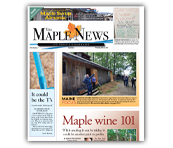BACK TO HOME
Cornell Corner

Maple hazelnut spread, a new product from Cornell
Aaron Wightman | September 19, 2024
VAN ETTEN, N.Y.—Maple hazelnut spread is a novel confection developed by the Cornell Maple Program.
It utilizes hazelnuts and maple sugar, along with other carefully selected ingredients, to create a creamy spread with rich flavor and a smooth mouthfeel.
Initial market research reveals a strong consumer liking.
For producers interested in expanding product offerings, the Cornell Maple Program has posted a fact sheet with recipes and other details on the new product development website.
The market for nut based spreads continues to grow as consumers learn about the benefits of the fats they contain and search for healthy sources of protein.
These products are typically made by processing nuts along with added fats, proteins, sweeteners, and stabilizers to form a smooth textured spread. [ MORE ]

Maple Climate Program monitoring sugar bushes
Adam Wild, Director Cornell University Uihlein Maple Research Forest | May 28, 2024
LAKE PLACID, N.Y.—The Cornell Maple Program recently launched version 2.0 of the Maple Climate Network just in time for the maple season.
The Maple Climate Network is system of sensors collecting maple production and climate data and then sharing that data in real-time online.
Thanks to a grant from the North American Maple Syrup Council, the new version of sensors are collecting additional data but most importantly, the sensors have expanded outside of NY to collect data across the maple production region.
There are currently sensors in Ohio, Maine, Quebec, and Wisconsin along with sensors at the two Cornell Maple Research Forests in NY and hopes of still adding a couple more sensors this year.
Data from the sensors can be monitored in real-time online at www.cornellsaprun.com.
[ MORE ]
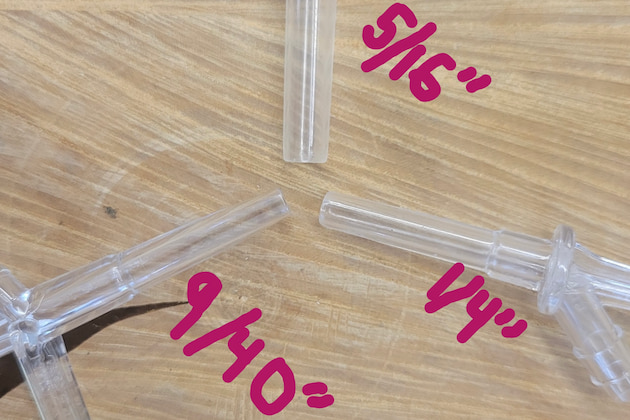
Shrinking the taphole, does it impact production?
Adam Wild, Director Cornell University Uihlein Maple Research Forest | December 13, 2023
LAKE PLACID, N.Y.—For the past couple decades, 5/16-inch diameter tap holes have been the commercial maple industry standard since switching from 7/16 inch spouts.
Over the years, folks have experimented with even smaller diameter tap holes with mixed results.
More detailed research has shown that ¼ inch diameter tapholes yield 10% less than a 5/16 inch diameter tapholes (3rd Ed. North American Maple Syrup Producers Manuel) while many equipment catalogs and producers claim they get the same yield from ¼ inch diameter spouts or smaller.
So how do smaller diameter spouts perform? Having a smaller diameter spout has the potential of creating narrower compartmentalized wounds within a tree. This is beneficial for trees that have been tapped for many decades and trees located in marginal soils or short growing seasons.
During the maple season of 2022 and 2023 we tested the sap yield from 5/16 (0.3125) inch diameter tap holes, 1/4 (0.25) diameter tapholes and 9/40 (0.225) diameter tap holes at the Cornell University Uihlein Maple Research Forest in Lake Placid, NY.
[ MORE ]
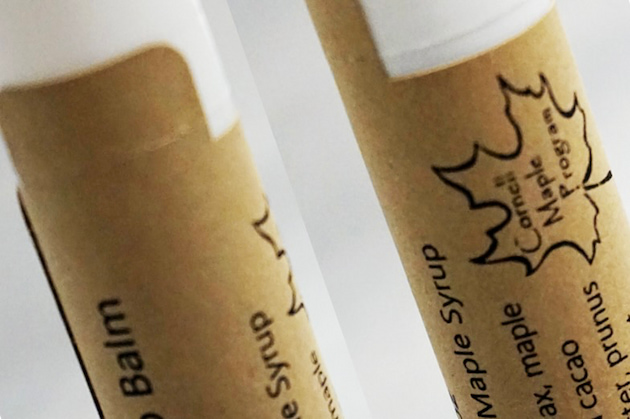
New products from Cornell: Maple lip balm and more
Ailis Clyne, Cornell Maple Program | December 13, 2023
VAN ETTEN, N.Y.—Maple is an enticing ingredient in so many products, and its usefulness can apply to more than just foods.
Honey is already utilized by producers and cosmetics manufacturers alike in numerous skin care and bath products ranging from hand-crafted cold process soaps to high-end face masks.
Maple is similarly well-suited to many of these products, and even has an advantage over honey: the relative ease of being made into a granulated sugar, which opens up a world of products that are easy to make and market.
What benefits does maple lend to skin care products?
Skin-loving components include: trace minerals, amino acids, phenolic compounds, vitamins, antioxidants, and of course, sugar which can act as a humectant (moisturizing) and an exfoliant.
[ MORE ]
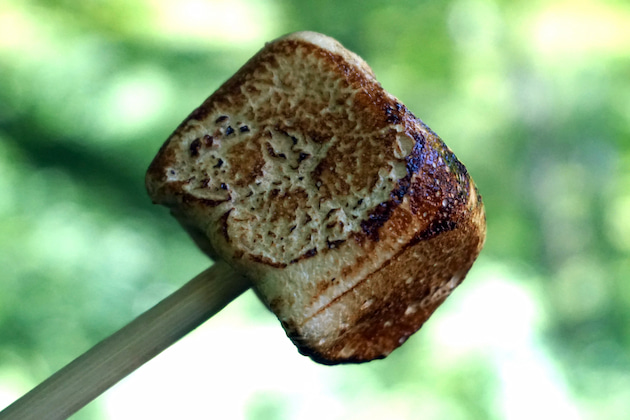
Cornell touts new maple marshmallows recipes
Catherine Belisle, Ph.D. and Ailis Clyne | January 6, 2023
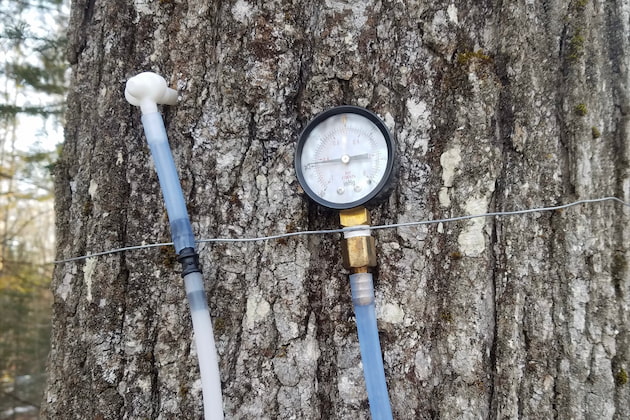
Quarter inch tubing showing promising early results
Adam Donald Wild | May 11, 2022
LAKE PLACID, N.Y.—Quarter inch tubing is showing promising early results in our latest research, getting high vacuum on gravity and potentially less likely to plug than 3/16ths tubing.
The use of 3/16” diameter tubing still remains a great option in gravity sap collection systems where the smaller inner diameter of 3/16” tubing allows a full column of sap to form through capillary action.
When the weight of the full column of sap drops in elevation, natural vacuum is achieved if the tubing is airtight.
When applied in a natural gravity system, under appropriate topographical conditions, 3/16” tubing can achieve maximum potential vacuum (often better than a vacuum pump) and even has capabilities to pull sap up and over a hill.
This maximum yield is achieved without the need for high priced vacuum pumps, energy input to run a pump, and 3/16” diameter tubing is cheaper to install.
However, recent research shows that sap production in 3/16” tubing drops off as soon as the second year after installation due to microbial growth. [ MORE ]
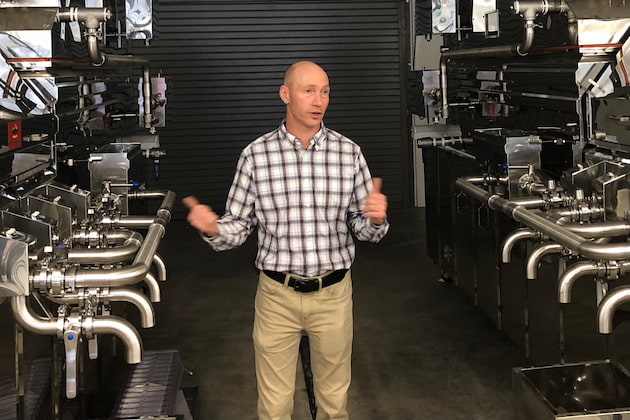
Cornell's Aaron Wightman to give free seminar at Hoover Maple in Branchport, N.Y.
Peter Gregg | December 9, 2021
BRANCHPORT, N.Y.—Cornell Maple Program director Aaron Wightman will be giving a free seminar at Hoover Maple Supplies on Friday.
Wightman will begin his talks at 10:00 a.m. and will cover the following:
—gypsy moths and how to manage your sugarbush for resilience against forest pests
—tubing sanitation and maintaining production in 3/16" lines
—tips for top quality, high flavor syrup
—new product development [ MORE ]
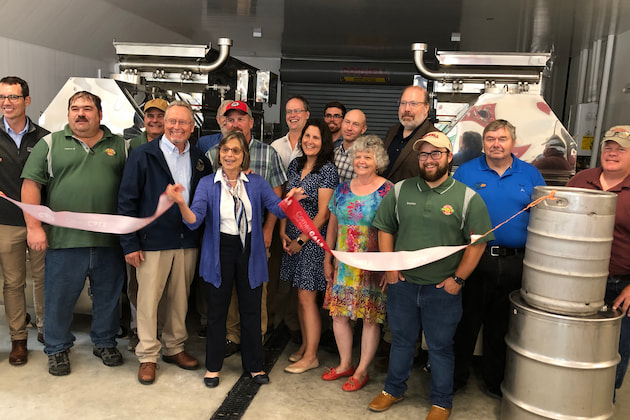
Cornell opens new state-of-the-art maple facility
Peter Gregg | August 12, 2021
VAN ETTEN, N.Y.—The doors are open on a new state-of-the-art maple research facility for the Cornell Maple Program.
The New York State Department of Agriculture and Markets and Cornell University’s College of Agriculture and Life Sciences (CALS) last month held a grand opening of the newly rebuilt Arnot Maple Research and Teaching Laboratory, which will house the first-of-its-kind new maple product development lab in the country.
Funded through $500,000 from the state budget, the laboratory is expected to foster further growth and innovation in New York’s maple industry.
The brand new 4,200-square-foot facility includes a new commercial kitchen and increased capacity for research and development of new maple products.
“Cornell’s Arnot Maple Research and Teaching facility conducts groundbreaking research that is critical to the growth of our state’s maple industry, which contributes significantly to the state’s ag economy,” said state agriculture commissioner Richard Ball. [ MORE ]





























